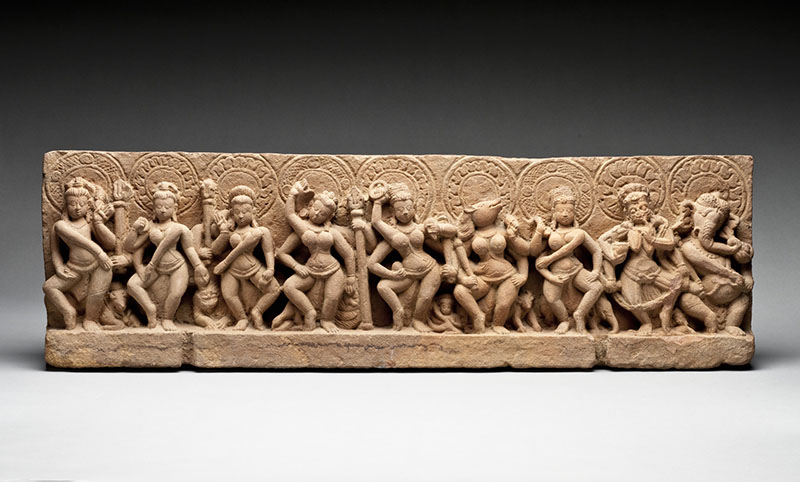Mask of Vaikuntha Vishnu, late 5th century. Learn more about 5th century masks
Designed by 

Any of a group of mother goddesses (matrika, Sanskrit, ‘divine mother’) mainly in Hinduism, especially in Shakta and Shaiva cults; usually auxiliary deities at large temples, though shrines dedicated to matrikas are found across the Indian subcontinent, especially in Nepal — as Ajimas — and Tamil Nadu. Often forming a group of seven (Saptamatrika) or eight (Ashtamatrika), collectively they are also called matr-gana or matr-mandala (‘band or circle of mothers’). Matrikas originate in heterogenous non-Vedic folk goddesses who were absorbed into mainstream religions between the fourth and eighth centuries CE, when their worship became a part of early Tantric ritual, and shaped yogini cults.
They initially appeared in Brahmanism as a varying group of innumerable protector goddesses often associated with Skanda, as in the Mahabharata and Ramayana, and later became a standardised group with distinct iconography — in the Silappadikaram, Brihat Samhita and Puranas — progressively morphing from fearsome to ambivalent. They appear as emanations from male gods (deva-shakti) and as attributes or helpers of Durga: often comprising Brahmani, Maheshvari, Kaumari, Vaishnavi, Varahi, Indrani, Chamunda, and Narasimhi. In Jainism, the Ashtamatrika figure as mothers of the Tirthankaras; in Buddhism, often as guardian deities. Originally ‘Matrika’ likely connoted a goddess of the subcontinent’s Austroasiatic-speaking indigenous peoples, who was identified with the seven stars of Pleiades.